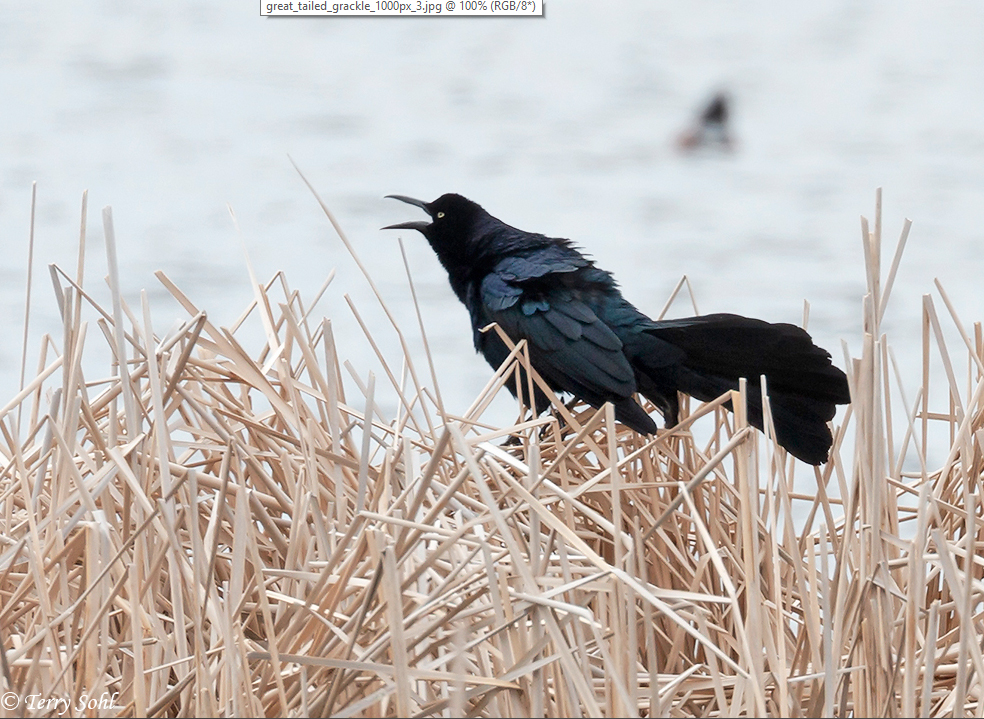
A Lifer (for South Dakota!). A lone Black-necked Stilt has been hanging around for several days in Minnehaha County.
It’s still a bit early for a lot of the songbirds to be moving through (particularly for warblers, the group I love to look for in the spring), so my recent birding efforts have focused on shorebirds and wading birds. South Dakota is actually a great place for shorebirds in the spring and the fall, as we have such a great variety of migrants that move through here. In addition to the common ones, you never know when you might find a rarity.
Over the last several days there has indeed been a rarity that I’ve found, a first for me in the state! There’s been a lone Black-necked Stilt hanging out at a wetland in northwestern Minnehaha County, a bird that was nice to enough to hang around for a return visit 4 days after I initially found him! I say “alone”, but in fact he had buddies. His buddies just happened to be a different species, as he was loosely associating with several American Avocets that were also using the wetland. It’s always great fun to see and observe Avocets around here.
It’s actually been a bit slow for shorebirds overall though. Part of it is undoubtedly the water conditions. It’s been very dry here, and several of my favorite shorebird spots don’t even have any water right now. Despite that, there have been some scattered shorebirds around, with a nice mix of variety (in addition to the Avocets and Stilt). There have been a few Willet, which always seem kind of drab until they unfold their wings and take flight, showing that gorgeous black-and-white wing pattern. I have yet to see any Hudsonian Godwits, but I have seen a few scattered Marbled Godwits. There are always plenty of Greater and Lesser Yellowlegs around, and Pectoral Sandpipers always seem to be pretty common as they move through too. Baird’s and Semipalmated Sandpipers are also around as usual, with a few scattered Least Sandpipers too.

Always a fun one to see, and watch as they feed…an American Avocet.
There are three other kinds of shorebirds I’ve found too that are some of my favorites. I ran into a group of about 15 Semipalmated Plovers, probably the most I’ve ever seen at once, as they normally seem pretty solitary. They always look so dapper to me and couple with their very small size, they’re just so darn cute. Another favorite are Wilson’s Phalarope which are pretty common around here right now. The birds themselves are beautiful, but it’s their behavior that’s such a great attraction, with flocks of them sitting on the water’s surface and spinning around like mad-men as they try to swirl up food items in the water column. One more favorite are Dunlin, seemingly yet just another small shorebird until you see that distinctive black belly patch.
A nice variety overall, but there are still quite a few shorebirds I normally see in the spring that I haven’t seen yet. Bigger wading birds are starting to arrive too, including a nice group of White-faced ibis I saw the other day (a species I don’t see all that often). Black-crowned Night-herons have arrived, as have Great and Snowy Egrets.

Two of five White-faced Ibis found at Lake Thompson, actually the first I’ve seen there.
I’ve also had some nice luck not only hearing, but seeing a couple of species that are normally pretty camera shy! Sora are something you hear pretty frequently in wetlands, and although I thought it was a bit early for them, I was fortunate this week to not only hear them in two different spots, but to actually see and photograph them. Nice to add to a relatively sparse number of photos I had of the species! Virginia Rails may as well be the Sora’s “Twins” in terms of shy behavior, but I also heard a rail and caught a glimpse of him moving through the wetland.
The weather’s been lovely, and the birds are arriving! I can’t wait for the coming days as the full-fledged songbird migration adds to all the fun that the shorebirds and wading birds have given me!
Like this:
Like Loading...

















